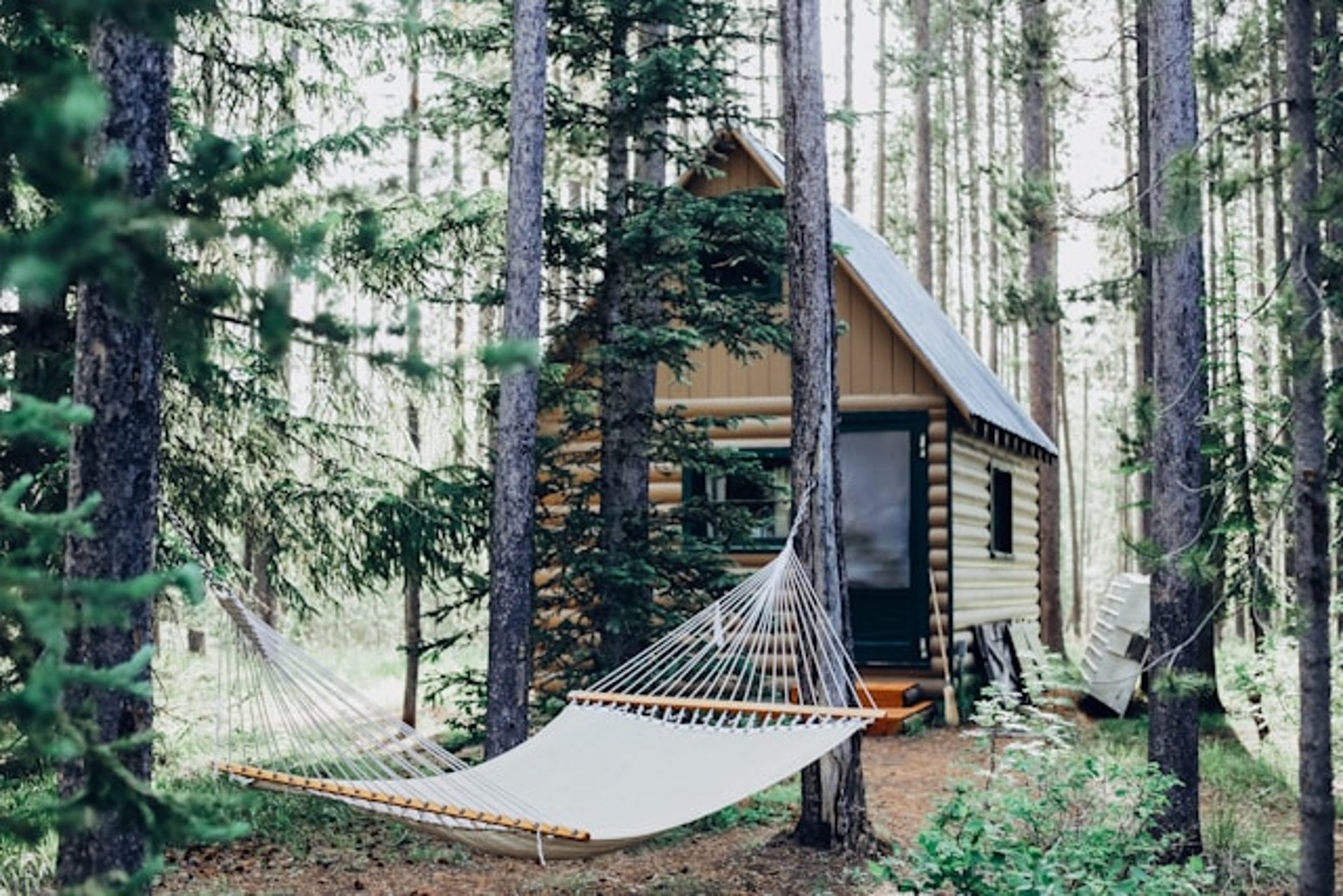Minimalist Living: Can a Lofted Cabin Shed Be Your Tiny Home Escape?
Learn how a lofted cabin shed can be your perfect tiny home escape. Enjoy affordability, sustainability, and smart design in a compact living space.
MOVING & HOME TIPS
3/19/20255 min read

Lofted Cabin Shed Living: A Minimalist’s Dream Home
What do you think about waking up in a cozy space surrounded by nature, sipping your morning coffee on a small porch, and knowing that every inch of your home has a purpose.
Contrary to popular belief, tiny living is not a fad; it’s a way to simplify life, reduce one's footprint, and invest more in meaningful experiences and connections, and less in things.
With a sleeping loft above and open space below, a lofted cabin shed offers a unique take on compact homes by using vertical room to its advantage. Unlike a typical tiny house, which keeps everything on a single level, a lofted design creates separation between sleeping and living areas.
The best part? You can design it to match your needs and lifestyle. For those who like the charm of a tiny home but worry about feeling cramped, a lofted cabin shed solves that problem. Plus, by choosing a lofted cabin shed for your next home, you can create a comfortable space without the excess that often comes with modern housing.
This post dives into why a lofted cabin shed works as a tiny home, how to design it for everyday living, and what to consider before making the switch.
Let's get started!
Why a Lofted Cabin Shed for Tiny Living
A lofted cabin shed stands out from other tiny homes because of its smart use of space. The raised loft creates a separate sleeping area, so the main floor stays open for cooking, relaxing, or getting work done. With less clutter on the ground, the space feels more open and livable.
A lofted design also means you don’t have to fold up a bed every morning just to make room for breakfast. The loft keeps your sleeping space tucked away, so you can leave it as is and go about your day. The extra height also makes the space feel larger and reduces any sense of being boxed in.
People use these sheds in all sorts of ways. Many turn lofted cabin sheds into full-time homes, weekend retreats, or even backyard offices. Some use them as guest houses for visitors who want a little space of their own. Others set them up in the woods or by the lake for an off-grid escape. The design works for different lifestyles, whether you’re looking for everyday comfort or a place to unplug.
How to Design Your Lofted Cabin Shed for Comfortable Living
A lofted cabin shed is a great way to create a cozy, functional space that fits your lifestyle. Even if don't plan on to making it your permanent address, and are simply downsizing or building an off-grid retreat or a weekend getaway, little, ingenious design choices can turn a lofted cabin shed into a warm, welcoming abode you can come back to as and when you please.
Below are a few practical tips to help you maximize space, cut costs, and incorporate sustainable features.
#1. Maximize layout for comfort.
Make every inch of your lofted cabin shed work for you. Position the sleeping loft above the main living space to keep the lower area open and uncluttered. Designate areas for core functions: a compact kitchen, a functional bathroom, and a cozy living space. Opt for a ladder or space-saving staircase to maintain a fluid layout. Keep walkways clear and place the furniture such that it allows for easy navigation.
#2. Create storage to free up space.
Install shelves along walls for books, kitchen supplies, and other essentials. Use under-loft space for bins or cabinets to store clothes and linens. Choose furniture that doubles as storage, like a bench with hidden compartments. Keep everything organized to open up the living area and prevent clutter.
#3. Personalize it to match your style.
Add large windows or skylights to brighten up the interior with natural light. Build a small porch for extra seating and a welcoming touch. Experiment with exterior finishes like wood, metal, or painted siding to achieve the desired look. Use colors and details that reflect your personal style.
#4. Cut costs when building.
Decide between a pre-built shed or a DIY conversion. Buy a ready-made structure to speed up the process or convert a basic shed for more customization and potential savings. Compare prices, factoring in materials, labor, and timeline to select the best option for the budget and skill level.
Plan ahead for additional expenses. Insulate properly to maintain a comfortable temperature in all seasons. Account for plumbing and electrical work, keeping in mind that hiring professionals increases costs. Choose compact appliances, space-saving furniture, and smart storage solutions to create a livable setup. Consider all details to avoid surprise expenses.
Lower expenses by handling certain tasks yourself, such as painting, flooring, or installing shelves. Shop for secondhand furniture and discounted appliances to keep costs down. Focus on the important items first and add decorative elements gradually.
While you're at it, consider minimizing your environmental costs as well. One way of doing that is to use reclaimed wood, recycled metal, and non-toxic paints. Also, insulate the shed properly to lower heating and cooling costs. Choose materials like sheep’s wool, cork, or spray foam with low emissions to improve energy efficiency.
#5. Install renewable energy to lower bills.
Set up a reliable power source to reduce dependence on traditional utilities. Install solar panels to harness renewable energy and position them for maximum sunlight exposure. Use a battery system to store power for cloudy days and keep a backup generator for emergencies.
#6. Capture and use rainwater for daily needs.
Collect rainwater for washing and cleaning. Install filters and purification systems to make it suitable for drinking. Supplement the supply with a well or nearby water source. Use low-flow fixtures to extend water availability and minimize waste.
#7. Set up a waste system that reduces impact.
Install a composting toilet to break down waste naturally and lower water usage. Set up a greywater recycling system to reuse sink and shower water for irrigation. Choose biodegradable soaps and detergents to protect the environment.
Thinking About a Lofted Cabin Shed? Here’s What to Consider First
A lofted cabin shed can be a cozy retreat or a full-time home, but jumping in with no prior planning can lead to unexpected hurdles. Before making the move, take time to sort out key details so your transition goes smoothly.
Start by checking local zoning laws and building permits. Some areas have restrictions on living in a shed full-time. Research regulations in your city or county to avoid fines or legal trouble. If permits are required, begin the process early to prevent delays. Talk to officials or neighbors who have gone through it for insight.
Move on to considering the climate in your region. A lofted space traps heat in the summer and can get chilly in the winter. Proper insulation keeps temperatures comfortable year-round. Consider energy-efficient windows and ventilation to improve airflow. A wood stove, mini-split system, or propane heater can keep things warm when temperatures drop.
After that, prepare to downsize and organize smartly. Moving into a smaller space means letting go of clutter. Focus on essentials and choose furniture with built-in storage. Wall-mounted shelves, under-bed drawers, and foldable pieces save space. Keeping only what you truly need makes daily life easier and more enjoyable.
Wrap up your planning by adapting to the lifestyle shift. Despite its simplicity, a lofted cabin shed has some trade-offs as well. Limited space means you'll have to get creative with layouts and daily routines.
So, Is a Lofted Cabin Shed Your Perfect Tiny Home?
A lofted cabin shed gives you a practical and cozy way to embrace tiny living. The raised sleeping space frees up room below, so every square foot counts. With smart design choices, you can turn a simple structure into a functional and inviting home. Whether you want a full-time residence, a weekend getaway, or a private workspace, this setup offers plenty of flexibility.
Living small brings freedom along with a compact home. A lofted cabin shed costs far less than a traditional house. Downsizing will help you cut down on expenses and focus on what truly matters. Customization options let you create a space that fits your needs and budget. If you dream of a lifestyle with fewer financial burdens and more independence, this could be the perfect fit.
Sustainability also plays a big role in the appeal of tiny living. A smaller footprint means using fewer resources, and off-grid features like solar panels and rainwater collection can make your home even more eco-friendly. Minimalist living naturally encourages a simpler, less wasteful way of life.
Now is the time to take the first step toward a simpler, more intentional way of living. Explore the possibilities, plan your design, and start building your own tiny home escape.
Explore
Welcome to Stay Curious – the blog where questions never get old and answers are always a little bit unexpected. Here, we challenge the status quo, dig into the weird and wonderful, and offer insights that might just make you think, “Why didn’t I know this sooner?”
From quirky facts to deep dives into the everyday mysteries of life, we’re all about satisfying that itch for knowledge you didn’t even know you had.
So, go ahead—stay curious. We promise it’ll be worth your while. Or, you know, not.
Contribute
Learn
ask.staycurious@gmail.com
© 2025. All rights reserved.
We welcome guest posts on business, tech, travel, finance, lifestyle, career, relocation, and home improvement. Submissions must be original, unpublished (online), at least 800 words, and written in English.
Ready to contribute? Contact us with your ideas!
